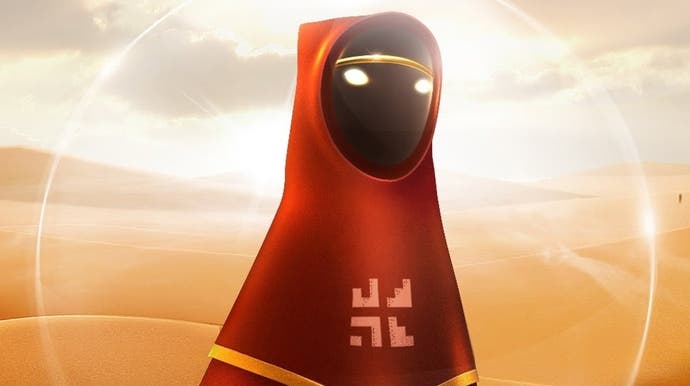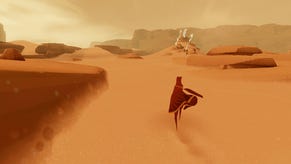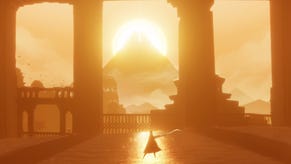Does Journey's PC port deliver the definitive experience?
How a timeless console classic benefits from cutting edge hardware.
Journey, the delightful and serene game from That Game Company has finally made its way over to PC, available exclusively on the Epic Games Store - and in theory at least, the transition to this platform should allow for the definitive experience; a game freed from its technical constraints on console and allowed to scale on the hardware of today - and tomorrow. I'd say that the potential is there for this game to deliver that experience, but we're a patch or two away from perfection.
It's over seven years now since ThatGameCompany's original release wowed PlayStation 3 gamers, and the objective is simple enough: there's a mountain in the distance, and your job is to traverse the desert to get there, meeting up with and collaborating with other players en route - though any kind of communication (be it speech or text) is not possible. The concept is straightforward, but the experience and the art style is simply magical.
Three years after Journey's original launch, developer Tricky Pixels handled the PlayStation 4 conversion, which doubled frame-rate to 60fps and boosted resolution from 720p to 1080p. It's a great game, but aspects of the original presentation changed in the transition between PlayStation consoles: sand rendering was altered and motion blur was removed. Anti-aliasing fell a little short, and there were some slight dips to performance. A PS4 Pro patch was never released, but boost mode should be able to resolve the minor frame-rate issues, at least.
The PC version brings another developer into the mix, with the game's publisher - Anapura - at the conn for this one, and I'd say that the port is competent overall, though there is clear room for improvement. Let's talk about the plus side of things first: arbitrary resolutions are supported, and Journey is fully supported on ultrawide screens. Personally, I found the move to a 21:9 aspect ratio to be transformative for this game - the 'cinematic' look is sublime. Secondly, there is indeed support for higher refresh rate displays - but this is where some problems start to emerge.
Journey PC has windowed and full-screen support, but the latter option actually seems to be of the borderless window variation. This means that any resolution you choose in-game is scaled to your desktop configuration. So, for example, if your desktop is set to 4K but you run Journey at 1080p, you'll get scaling - the quality of which is somewhat poor. The same limitation is in place for higher refresh rate support - you'll only be able to access, say, 144Hz, if your desktop is set to that configuration before you boot the game. It's a pain, to be honest.
High refresh rate support definitely helps and can help to mitigate the loss of the original PS3 version's motion blur. This effect was first removed in the PS4 port, but unfortunately it has not returned as an option in the new PC build, which is a shame. Running at a higher refresh rate was no problem at all on our mainstream-focused Core i5 8400 build, which we typically pair with GTX 1060 and RX 580 for performance testing. However, bizarrely, the game seems to struggle with Ryzen processors. My Ryzen 7 1700X stutters badly below 60fps at times on this conversion, even paired with a (highly under utilised) RTX 2080 Ti at 4K resolution.
Where PC does improve over all prior versions would be in anti-aliasing quality. If the PS4 version is using FXAA (it is somewhat difficult to say for sure), the PC game provides a higher quality version of it, plus there's the option for far superior sub-pixel detail smoothing via 2x, 4x and 8x multi-sampling anti-aliasing (MSAA). It's pretty much the only option in the limited graphics menu that has any kind of meaningful performance scaling across multiple options. Dropping from 8x to 4x on an RX 580 increases frame-rate by 43 per cent, rising to 62 per cent from 8x to 2x. By disabling it all together and relying on FXAA, you can effectively double your frame-rate.













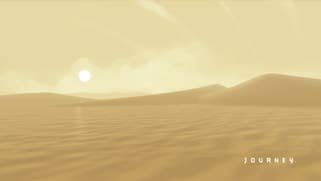




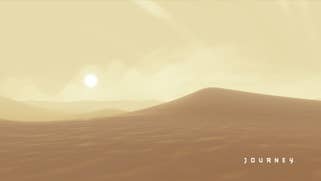

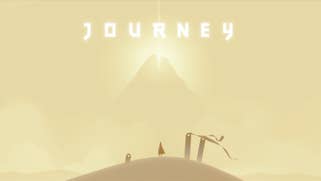
Beyond that, the sand rendering setting gains 21 per cent of performance by dropping from ultra to high, though the dune option sees only an eight point advantage by switching from ultra to low. Rendering across this area of the game is curious in general. Reducing quality settings seems to change the aesthetic of the effect as opposed to impacting precision. In that sense, I'd recommend experimenting with the settings here to see which you prefer best as opposed to automatically assuming that the ultra setting is best.
If you're looking for a match for the sand rendering quality of the PS3 or even the PS4 versions of the game, you're out of luck here. Once again, the look of the effect has changed - and like the PS4 version, perhaps it's not necessarily for the better. All told, I still think the original look of the game delivered the best presentation, but relative beauty is definitely in the eye of the beholder on this one.
The key takeaway, I think, is that Journey PC doesn't scale much beyond the original console versions in terms of fidelity - the game has been 'brought' to PC, but not necessarily improved for the more capable platform, beyond improved display support. It would be preferable to see a little more effort here, not just in visual effects (let's have motion blur restored!) but also in terms of quality of life options too - an inverted controller toggle would be very welcome, for example. There also appear to be genuine slowdown issues when the game dips beneath 60fps, though bafflingly, it does run at full speed if you add a 30fps cap using external options.
So, with all that in mind, what we have here is a decent enough port of what remains a wonderful, timeless game. Performance isn't bad either - a GTX 1060 can lock you to 1440p60, though curiously, AMD's typically faster RX 580 can have some issues. A bit of driver attention there would be welcome, as would another pass or two from the developers - proper full-screen support and more robust options would go a long way towards realising this conversion's full potential.
